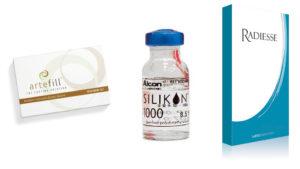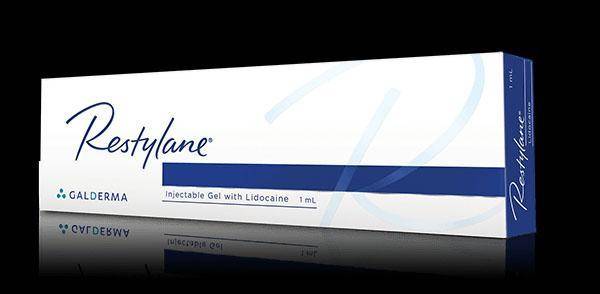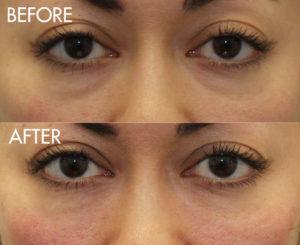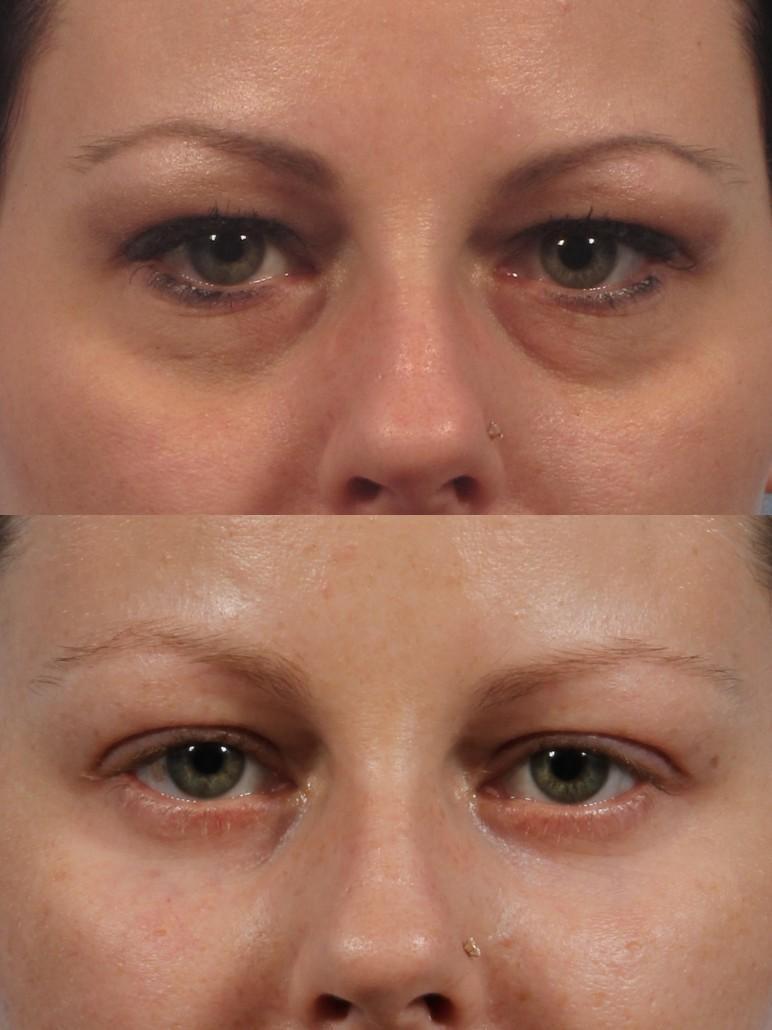How to choose the best filler under eyes and tear trough
Is one type of filler the best for under eyes and tear troughs?
The delicate area under the eyes is a popular area for facial fillers because this treatment can eliminate or reduce dark circles and eye bags without surgery.
But there are many types of under eye filler and which one works the best and is the safest?
Note: This blog post is my opinion based on my extensive experience and specialized training in oculoplastic and cosmetic surgery but I discuss off-label applications for FDA-approved fillers. Every person is different and you need to discuss the best options for you with your doctor. Ultimately, if you carefully choose an expert in under-eye filler treatments, she or he will select a filler or combination of fillers that works well for them based on their experience and skill.
Permanent fillers that I don’t like to use under the eyes
Before I describe the best under-eye fillers I want to share the list of fillers I don’t use under the eyes. There are always exceptions but in general I don’t use these fillers for the under-eyes.
I treat many patients who have had these fillers with untoward results.
I don’t like to use permanent or semi-permanent injectable fillers under the eyes. These include Belafill (made of plastic beads floating in pig collagen), Radiesse (calcium spheres floating in hydrogel), Silicone (or Silikon 1000), and Sculptra. These fillers are not reversible and lumps and bumps can be difficult to correct if the filler isn’t placed in exactly the right place. In my opinion, it’s not worth the aggravation and potential for permanent problems in an area that can be unforgiving. There have been many occasions in my NYC practice when I’ve had to do surgery to remove permanent fillers from someone’s under-eyes.
The safest fillers for the under-eyes and tear trough (HA gel)
Currently the best fillers for the under-eyes for the vast majority of people are made of cross-linked hyaluronic acid (HA) gel. They are soft, pliable, and most importantly, reversible. If there is a problem with a lump or a bulge or a discoloration (tyndall effect) or a bubble from the filler, I can take it away with an enzyme injection that dissolves the filler.
There are a lot of different varieties of HA gel fillers and the number of choices are growing. These include the Restylane family, the Juvederm family and Belotero.
Which are best? They all act differently when they are under your skin and have different stiffness, flexibility, dispersion, and swelling behaviors. The right mix of characteristics makes for the right filler for the job.
The list of under-eye HA fillers
I still choose Restylane-L as the best under eye filler because of it’s great behavior profile. I explain why later. But first, below is a list of FDA-approved HA fillers (which are all off-label for under eyes) and how they work for the under-eyes and tear trough:
Before and after Restylane (placed with a cannula) for under-eye bags and dark circles
What about fat injections under the eyes?
Fat injection, also known as fat transfer or fat grafting is a permanent filler that uses your own fat cells to add volume, similar to injectable synthetic fillers.
I frequently perform under-eye fat grafting but usually in conjunction with cosmetic eyelid surgery to blend and provide volume support to the areas around the eyes (temples, under the brows, under-eye hollows, and cheeks).
Many surgeons are reluctant to do under-eye fat injections and may even criticize this procedure. I find it to be safe and effective and it’s success depends very highly on the technique being used. I process the fat in a sterile, closed system, I place conservative amounts of fat in the deepest level with very small fat parcels in each location.
Fat grafting is less predictable than filler because some of the cells being injected will not survive, but even at a 50% survival rate the benefits can be very worthwhile.
I performed under-eye and cheek fat injections with a lower eyelid lift surgery to smooth this woman’s under-eyes
You may have had the wrong under eye filler if you see:
Swelling that lasts longer than a few weeks
Lumps that don’t dissipate
Blueish discoloration
Uneven appearance
Unwanted results arising from the wrong under eye filler can often be corrected but it’s important for you to seek a cosmetic eyelid plastic surgeon who specializes in this delicate area. Oculoplastic surgeons are best trained to manage these issues and in NYC I frequently correct under-eye filler problems. Your first step is arranging a consultation with an expert.





